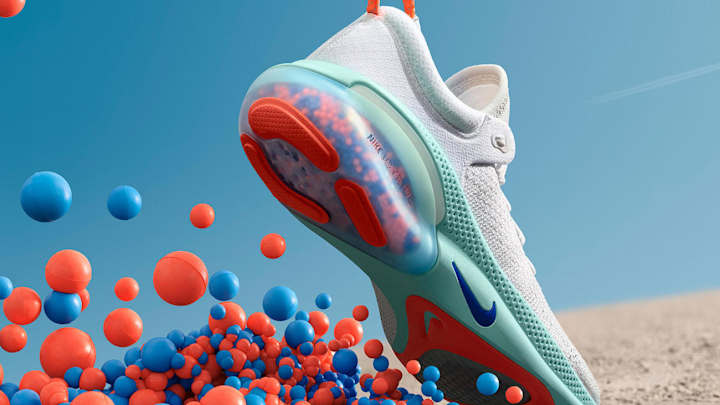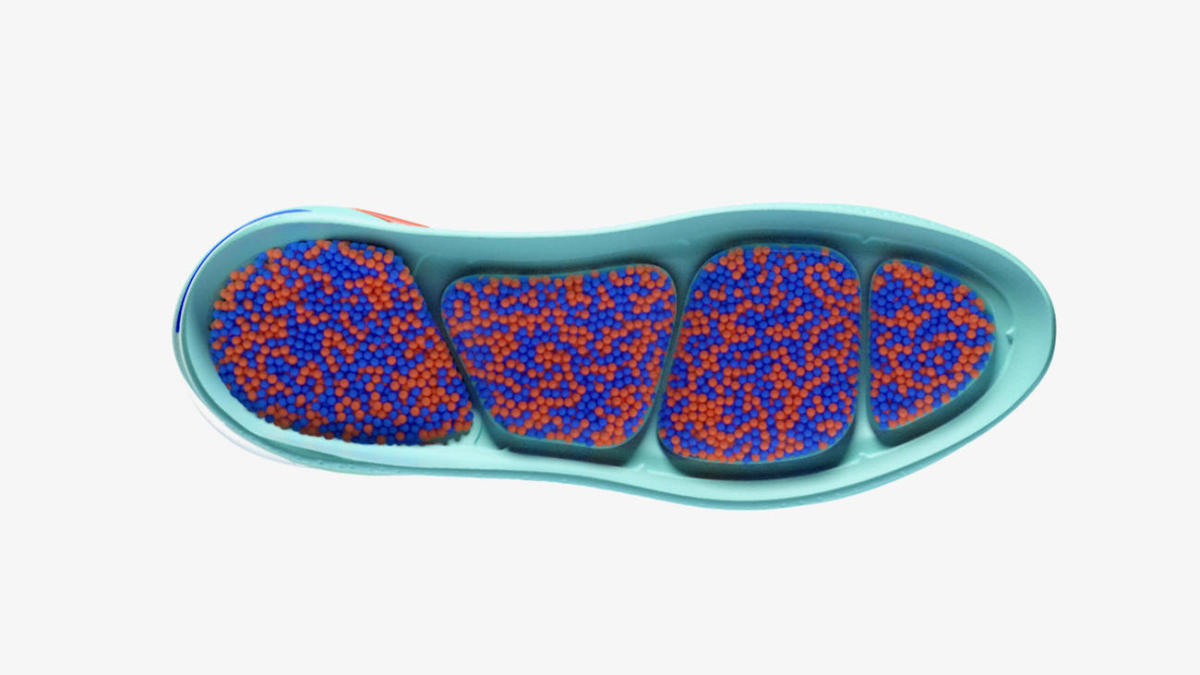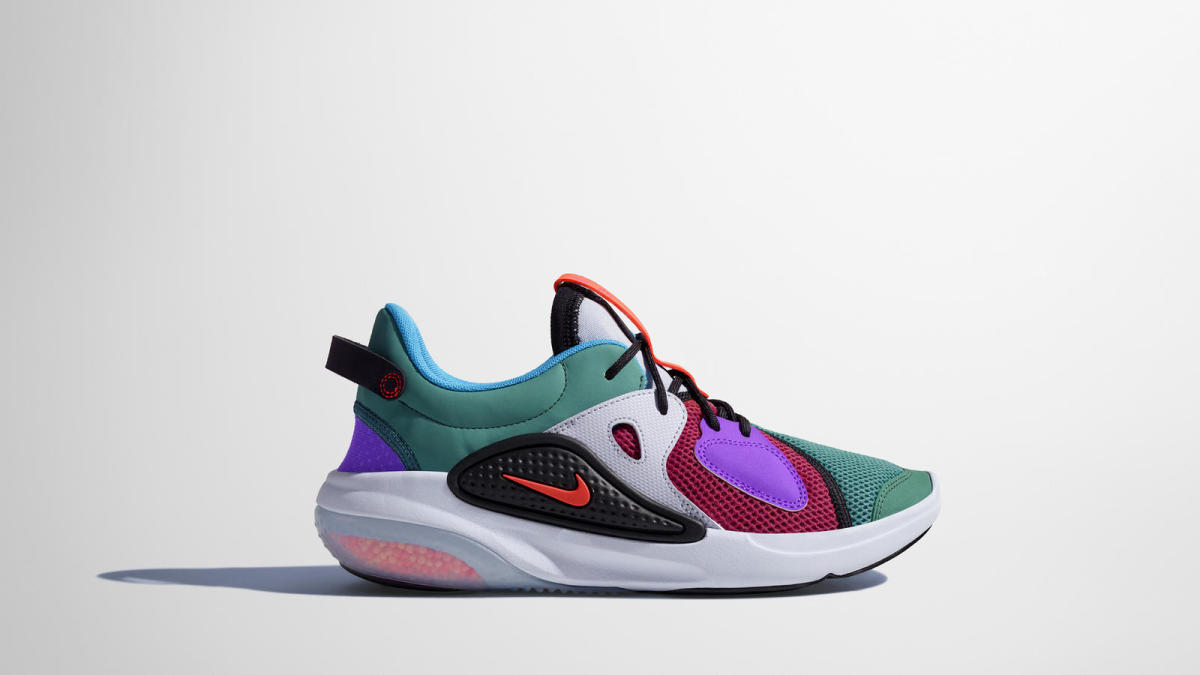Nike Unveils Joyride Running Shoe in Latest Cushioning Experiment

In the late 1980s, Dippin’ Dots introduced its “Ice Cream of the Future” to the world by freezing ice cream into tiny pellets with liquid nitrogen. Nike is now relying on similar-looking foam pellets for its next new running shoe. On Thursday morning, the sportswear giant unveiled Nike Joyride as its latest innovation into new cushioning options after its success with Nike React foam.
When you flip the shoe upside down, the footbed immediately stands out, with four pods featuring the Dippin’ Dots-looking beads. There are thousands of them, comprised of thermoplastic elastomers (a combination of plastic and rubber), that serve as the shoe's foam. Because they are designed to be personalized for the user’s footstrike, each of the four pods varies in size.

It’s not the first venture into beaded cushioning by a shoe company. Some may recall that PUMA released "jamming" technology with “NRGY beads” that were seen in a clear midsole of the shoe that featured cushioning customized for each step and a transparent bottom to display the beads. While the shoes received some positive reviews, it was quickly overshadowed by Adidas’ resurgence with Boost foam technology. When asked about the differences between Joyride and NRGY, Nike's internal research reported a 17% greater energy return and 38% softer feel compared to the PUMA Jamming.
As an experienced runner, I’d be more inclined to stick with Nike’s other iterations of trainers and racing shoes such as the Zoom Fly, Pegasus Turbos and Vaporfly 4% or Next%. I was invited to the Nike New York City headquarters to test the shoes and I can confirm that the shoe is definitely not for every day running, speed work, racing or long runs. It fits into the runner’s toolkit as a shakeout or recovery shoe. The shoes are light with some bounce and the Flyknit upper provided the familiar form-fit feel you find in other Nike running lines. Because the pods are the only thing between the beads and the ground, you can feel when they absorb the shock from impact with the running surface. I also felt them move to conform to my personal stride. I also brought my friend, Kate Caputo, along with me to the testing—she is a self-described “reluctant runner” who casually mixes in a few miles into her week and races a half marathon about once a year with encouragement from other friends. She was fairly impressed by the shoes, which aligns with Nike’s hope that Joyride attracts newer runners to be active.
“The shoes pleasantly surprised me with their lightweight feel and ample cushioning without compromising on support,” Kate said. “Despite my tendency to overpronate, I found them to provide just enough stability while maintaining flexibility underfoot and ground feel.”
The Joyride technology will debut with the Nike Joyride Run Flyknit set to hit stores globally on Aug. 15 for $180. The shoe will also be available in other styles, which CEO Mark Paker was particularly excited about when he teased it on June 27th: “We think the design has great potential to stand-out with the consumer in both performance and lifestyle.”
The Nike Joyride Optik will be released for women and includes a leather heel. The Joyride Setter is part of the Nike Sportswear Line and features rubber eyelets and stability patches that debuted during Paris Fashion Week. A kids version, called the Joyride Nova, will have two bead pods on a footbed for children to play.

Below is a brief interview with Nike Running senior project manager William Moroski regarding the latest Nike tech. It has been edited lightly for clarity.
SI: When did the concept or idea for this shoe initially start and why?
WM: When we first began to dive into this project, we were hyper-focused on creating a shoe that would allow an elite runner to recover more quickly. But, as we started to build, test and iterate in this recovery space, we saw that by creating a shoe that was engineered to help an elite recover more quickly, we were also engineering a shoe that made running easier for everyone. And that is something that we realized could resonate with far more people than just elites and even bring more people into the sport. Driven by this insight, the Nike Joyride Run Flyknit was engineered to give your legs a day off and deliver an entirely new underfoot experience. With thousands of tiny beads directly underfoot, Joyride is a personal cushioning platform like we’ve never created before and offers an entirely new running experience.
SI: Are all the beads the same or do different colors have different mechanical qualities?
WM: All the beads in Nike Joyride are the same material construction (TPE foam) and the same dimension regardless of color.
SI: Will the beads be used to optimize energy transfer based on stride? For example, different pouches with different energy transfer qualities.
WM: Yes, we have tuned each of the four pods to house a different number of beads and to help ease the transition and optimize stability through your stride. For example, almost 50% of the total beads in a shoe are housed in the heel to allow them to move around the foot and absorb impact. In the toe, however, the pod is smaller allowing for more energy return at toe-off.
SI: Is the distribution of the beads the same in the forefront and heel? Could that change over time?
WM: The pods are designed for the foot in motion. The heel pod features more beads to provide greater impact absorption while the remaining pods are tuned to facilitate a smooth transition and to provide stability, culminating with a pod designed to maximize energy return at toe-off. The beads are systematically placed to remain in optimal positioning for the duration of use.
SI: Will the air around the beads help or hurt the heat transfer in the foot? Like will the shoe stay cool underfoot or heat up?
WM: The airflow that allows the system to compress and provide the cushioning and protection for runners should keep the underfoot cool. Throughout the rigorous wear-testing process, we have not had any heat transfer issues.
